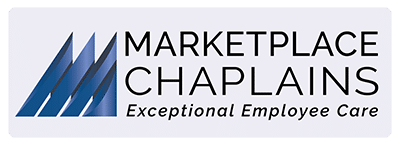Four Generations of Employees in the Workforce
There are now four generations of people in the workforce with different communication methods, languages and styles, yet they experience the same personal problems and crises.

How to Manage Four Generations of Employees
Today’s workplace is multicultural and composed of employees with varying talents and skills. It might also be composed of up to four generations of employees with varying communication styles and cultural and generational norms. Although generational diversity can have its benefits, it can be a challenge for managers in an organization to learn how to integrate the generations successfully and nurture their growth in the company.
Know your generations.
With each generation comes different expectations, demands and needs. For your business to thrive, it’s essential to identify and understand these particular characteristics of each of the four generations:
- Baby Boomers (1946-1964) grew up in a time of prosperity and generally give high priority to work over private life. They tend to value a human touch over technology. Words to describe work habits: competitive, optimistic, and workaholics.
- Generation Xers (1965-1980) don’t live to work but put much emphasis on work-life balance. They work well with challenges and are independent, adaptable and flexible.
- Millennials (1981-1995) rely heavily on technology and are highly educated—in fact, the most educated generation of our time. They are also flexible and adaptable, as well as ambitious with a strong entrepreneurial spirit.
- Generation Zs (1996-2010), aka post-millennials, are an even more tech-savvy and culturally diverse workforce. Although their long-term working habits haven’t been established, they are eager to earn good money and create change in the world.
How do you meld all of these rewards, social systems, and people processes into operating a successful company? There are a few options. You can depend on in-house HR professionals to manage the specifics, or you can hire an organization design consulting firm to add peace of mind to your multi-generational management.
Here are some tips for managing four generations of employees.
Establish respect.
One of the jobs of an HR professional is to be a liaison between all the company’s current employees and newcomers, prioritizing mutual respect in the workplace as the standard. Encourage younger employees to appreciate the seniority and experience of older ones, who should recognize how younger generations can contribute as well.
Provide real reasons to love their job.
According to a Harvard Business Review survey, meaningful work is valuable to employees of all ages. However, they define meaning differently. For instance, millennials value community-like workplaces while older generations prize accomplishing their career goals. This can help you envision what it means to them to wake up and go to work in the morning, and then appeal to that in your organizational design.
Cultivate sharing knowledge.
Having a multi-generational office means you have a talent pool filled with different knowledge, experience, and information. Use that to your advantage by encouraging Gen Xers to guide younger employees with interpersonal communication and post-millennials to help older employees with technology. An example of this approach is reverse mentoring, in which a younger employee begins a professional companionship to exchange experience, skills, and work ethics with an older employee.
Approach each person differently.
Consider how generations will benefit from different approaches in general, but also the specific age or age group of the employee. Younger employees often prefer a challenge with little instruction, while soon-to-be retirees may be considering the benefits of part-time employment. In addition, millennials tend to value social life outside of work and will often consider remote work.
They have life in common.
Regardless of their differences, these individuals experience the same personal problems and crises in their lives. They have life in common. Marketplace Chaplains’ well-trained and experienced Chaplains provide proactive and personalized employee care teams adept at coming alongside struggling employees no matter what their age or generation or problem.
Providing resources such as Marketplace Chaplains helps keep your employees’ heads in the game, reducing presenteeism by providing a safe place to vent or seek help or listen to wisdom from someone who cares. Your workplace can be a rewarding place to work for everyone from Boomers to Gen Z’s. Having neutral chaplain teams helps mitigate the miscommunication and misunderstanding between generations.
In summation, find ways to appeal to each generation without sacrificing individual differences. While it might be difficult to balance them all, every generation has something valuable to offer your workplace and we should honor those unique differences mainly by recognizing what our employees are—people!







